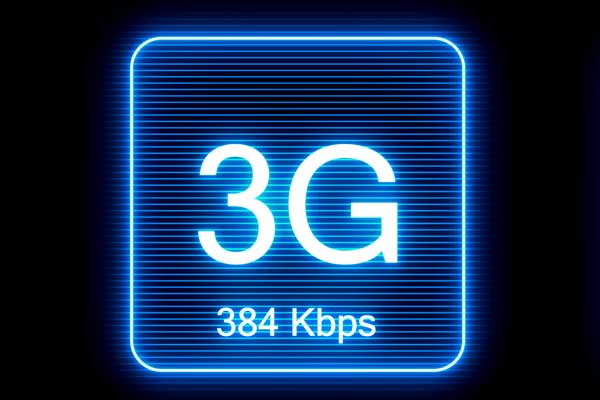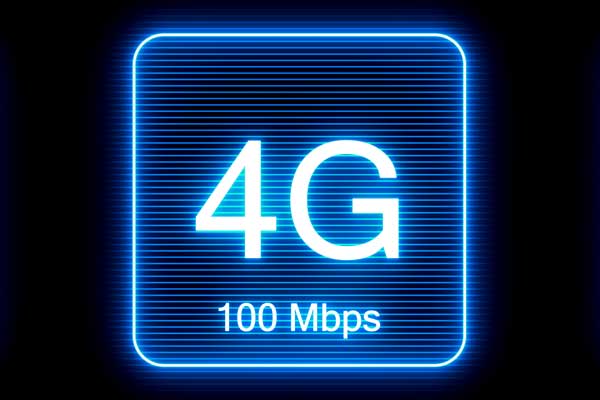What is a 2G network?
In telecommunications, a ‘network’ refers to a system that enables information to be transmitted between different locations via electromagnetic or optical signals. A mobile network is a system that uses radio waves to connect the different network elements (or ‘nodes’), without the need for a cable or wired connection between those nodes.
The familiar nG designation used to describe mobile networks (2G, 3G, 4G, 5G) refers to the generation of digital technology the network is built on.
What is 2G?
2G emerged in the early 1990s. The technology behind most 2G networks (including UK-based ones) is known as GSM (Global System for Communication).
Compared to its first-generation predecessor, 2G offered the following advantages:

Data services
For the first time, 2G enabled text-based data to be transmitted via short messaging service (SMS). 2G also allowed networks to offer services such as multi-media messaging (MMS) and picture messages.

Security
While audio and data transmission could be digitally encrypted, the encryption was weak. Over the years a number of vulnerabilities were found within 2G, and real-time cyber attacks are now considered a simple task for hackers.

Internet access
Developments in data transmission, including Circuit Switch Data (CSD), Cellular Digital Packet Data (CDPD), and Enhanced Data Rates for GSM (EDGE) gradually extended the internet capabilities of devices.

Device design
2G enabled more efficient use of the radio frequency. Devices themselves became more energy-efficient, smaller, and cheaper.
What is the difference between 2G, 3G, and 4G?
For businesses, 2G networks offer widespread coverage, along with a cost-effective, secure, and reliable way to transmit small packets of data. This made it a useful connectivity option for a growing range of IoT and M2M applications, from sensors and monitors in industrial settings, to vehicle tracking and basic wearable technologies. But since the 1990s newer technologies have emerged bringing more possibilities and options for IoT applications.
3G
The first 3G networks were launched in the early 2000s, primarily to meet the needs of the early smartphone market. UMTS (Universal Mobile Telecommunications Service) is the dominant group of technologies on which 3G is based. This is known as a ‘packet-switching’ system, which, compared to 2G, makes it much more efficient for connected devices to send and receive data.
In practical terms, download speed – i.e the rate at which data can be transferred from the internet to a device – is the biggest difference between 2G vs 3G. The typical basic GSM download speed is less than 0.1 Mbit/s. By contrast, thanks to High-Speed Packet Access (HSPA) technologies, UMTS 3G networks enabled typical download speeds of 1.5Mbit/s.
For businesses, 3G meant that more data-intensive applications could be used remotely, opening the door for features such as video support and the frequent transmission of large amounts of data between connected devices.


4G
First appearing in the mid-2000s, most 4G networks are based on a standard known as LTE (Long-Term Evolution); so-called because it involves an evolution of existing technology, rather than building whole new infrastructure.
LTE download speeds are upwards of three times higher than those achievable with 3G technologies. This makes standard 4G networks a viable connectivity option for highly data-intensive applications, including surveillance and AI-driven technologies.
However, of more general application, LTE has also given rise to a number of evolved, low power, wide-area LTE network technologies designed specifically for industrial, commercial and consumer-facing IoT projects.
These include:
- LTE Cat M or LTE-M (Long-Term Evolution for Machines)
- LTE Cat NB or NB-IoT (Narrowband IoT)
- LTE Cat-1
You can read more about LTE connectivity here.
Particularly as 2G and 3G networks face sunsetting (see below), one or more of these evolved LTE networks may represent a viable connectivity option for your long-term M2M/IoT strategy.
Why is 2G still used?
In certain emerging markets (India, for instance), there are still very large numbers of users who rely on feature phones; i.e. devices used solely for voice calls, text and very limited access to the internet. The view in these markets tends to be that if it continues to meet user needs, and mobile operators are happy to provide a 2G service, there is no clear immediate need to shut down the 2G networks.
In the UK and other mature markets, 2G continues to exist mainly as a fallback option. In other words, if a localised connectivity issue arises with a 4G service, users can rely on 2G for voice and text support along with ‘skeleton’ internet access until the problem is resolved.

Can I still use 2G data in the UK?

The simple answer is yes; but this might not be the case for very much longer.
One reason is that 4G network advancements – particularly the arrival of VoLTE (Voice over LTE) – means that it is no longer necessary to maintain 2G as a fallback. Also, with 5G services advancing rapidly, there is greater pressure to rationalise the radio spectrum, including freeing up frequencies that are currently ‘wasted’ on under-used networks.
The net result of all of this is that in the not-too-distant future, the case for closing (i.e. sunsetting) both 2G and 3G networks will become irresistible.
You can learn more about 2G/3G sunsetting and alternative connectivity options for your IoT projects in our dedicated resource linked above. For further IoT explanations, head to our glossary.
Find out more
For an expert assessment of your connectivity needs and to discover the best fit M2M options for your business, speak to Wireless Logic today.
Learn more about our connectivity solutions for a wide range of use cases here.